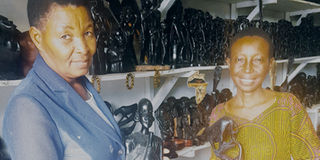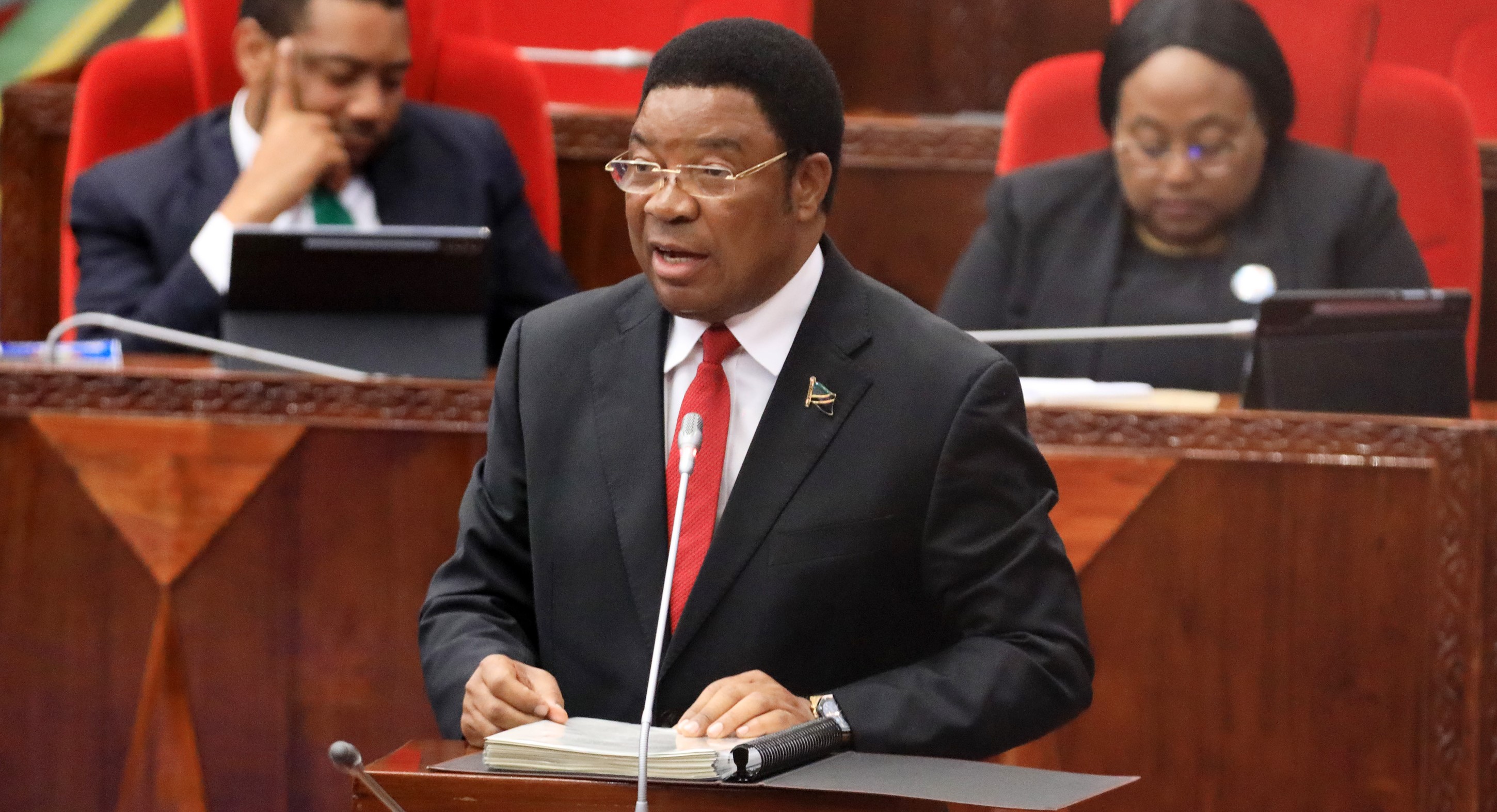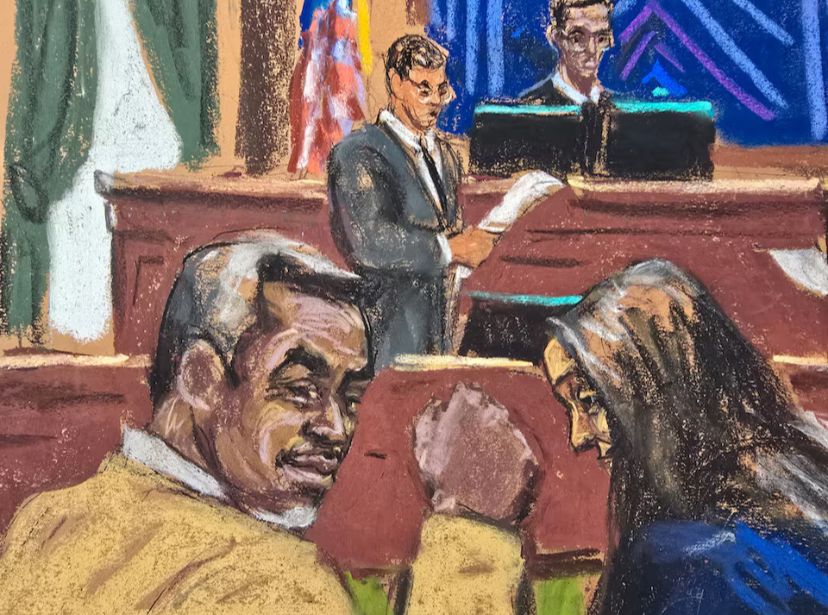Makonde art under big threat

Grace Lyimo (right) and Zuhura Shabani hold Makonde carvings in a stall at Mwenge, on the outskirts of Dar es Salaam city. PHOTO l TASNEEM HASSANALI
What you need to know:
Tanzania shares with Mozambique, the popularity of Makonde carvings, which have earned worldwide popularity. They are fancied by many tourists from many countries, who include them in their shopping lists.
Dar es Salaam. The future of local Makonde carvers and dealers is bleak due to a sharp decline in business, occasioned mainly by government restrictions to take the artworks out of the country.
Tanzania shares with Mozambique, the popularity of Makonde carvings, which have earned worldwide popularity. They are fancied by many tourists from many countries, who include them in their shopping lists.
The carvings, like Tingatinga paintings, are arguably rivalled only by the Kilimanjaro mountain, as powerful advertizers of the Tanzanian nation. In Dar es Salaam, for one, the carvings section of the handicrafts market at Mwenge on the outskirts of the city, has for a long time been a magnetic puller of mostly foreign customers.
That status is slipping away due a drop in sales, because carvings bought by foreigners mainly as presents for loved ones back home, or souvenirs, are confiscated at the Julius Nyerere International Airport.
The Citizen came has learnt that, travelers, who had not been notified beforehand about the restrictions, sorrowfully forfeit purchases, or cough up considerable amounts of money as fees to retain them.
As word spreads about the restrictions, tourists play it safe by avoiding to buy the carvings, restricting their curiosity to feasting their eyes on the artworks on display shelves.
The chairman of the association of Makonde art dealers, Mr Hamisi Muhando, says: “Our business has suffered a lot due to the restrictions. The Chinese were among the leading customers, but the previous flood of purchases has been reduced to a trickle due to potential customers fearing to suffer losses at the airport. We are in a fix because foreigners are our biggest customers; very few local people buy the products.”
He explained that, the downward trend begun 16 years ago, and prospects for a turnaround are virtually nil, unless the government softens its stance.
“What pains me is that, besides the decline in revenue, Makonde art has been acutely affected and even faces extinction, because younger people who would pick up the skills from older practitioners are understandably not keen to venture into something that doesn’t pay handsomely and may even vanish altogether,” says Mr Muhando , for whom Mwenge has been a base since 1984.
He laments further that, the government has made it very difficult for the business operators to keep afloat due a chain of hurdles, including high fees imposed on ebony and lengthy procedures for securing various permits.
He points out that, while it is understandable for the government to protect natural forests, the welfare of those depending on some of its products should be borne in mind.
At the end of the day, he points out, the wide range of fees literally eats up the high level of creativity, time and concentration that goes into carving fascinating objects.
In a tone that manifests deep concern, Mr Muhando says much of the the market has shifted to Mozambique where hardwood is more plentiful and restrictions are fewer.
The executive secretary of the National Arts Council, Basata, Mr Godfrey Mngereza, echoes Mr Muhando’s concern, saying the Makonde art form is gravely endangered and may disappear.
Initially, the carvers used ivory, which was banned; and now, hardwood is limited, which is justified because natural forests have to be preserved. Hardwood like ebony is expensive and not readily available these days. There are no plantations for the species.”
He explains, too, that, sculpture making is an art of patience; it entails much time and patience, and there’s no guarantee for selling the finished product. So, many young people who could inherit the skills of their parents are not interested to perpetuate the business. They want to engage in activities that generate income swiftly.”
Seventy-year-old Kenneth Mbulu , remarks: “I don’t want any of my children and grandchildren to get into sculpting, because, unlike in the fairly distant past, it is not rewarding. There are many hurdles, such as declining sales due to restrictions on taking carvings out of the country and fees.”
Grace Lyimo says: “This art form is declining progresssively and is nearing death. Business is relatively better in paintings, clothes and handbags. The government is to blame for creating a hostile environment for the handicrafts business. In the distant past, the Mwenge market attracted over 200 people a day, but the number has dropped to a few dozens.”
Last week, a message posted on Facebook read: “For all those who are traveling out of the country with Makonde carvings and artifacts of that sort to gift people, please ensure you request for a receipt from merchants and carry it to the Dar airport. There is a desk at the airport now where they will weigh the item, calculate the tax on it and they also charge an inspection fee.
“here is a book there with the list of items and the amount to be charged. I paid Sh4,600 per kilo for the Maasai statues I was carrying, including the inspection fee. You will be given a receipt for it too. I’ve taken many such things as gifts before but this is the first time I was stopped for the inspection of the item. Apparently it’s a new rule.”
The Acting Director General of Tanzania Airports Authority (TAA), Engineer George Sambali, told The Citizen that the restrictions of the Makonde sculptures and carvings at the airport is not handled by the TAA or any other airport authority.
The checking and formalities are actually handled by the Ministry of Natural Resources and Tourism.


